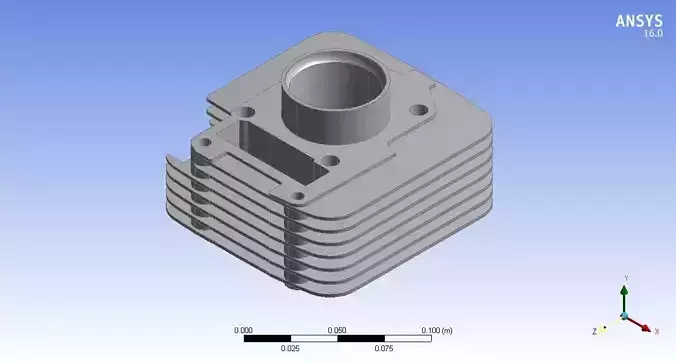1/2
Fins play a crucial role in mechanical engineering, particularly in heat transfer applications. Their primary function is to enhance the transfer of heat from a solid surface to a fluid (usually air or water) by increasing the surface area available for heat transfer. Here are the key functions and applications of fins in mechanical engineering:
Heat Transfer Enhancement: Fins significantly increase the surface area exposed to the surrounding fluid, which improves the rate of heat transfer. This is particularly useful in applications where efficient cooling or heating is required.
Temperature Regulation: Fins help in regulating the temperature of components by dissipating excess heat generated during operation. This prevents overheating and ensures optimal operating conditions.
Cooling Systems: Fins are commonly used in radiators, heat sinks for electronics, and air-cooled engines to dissipate heat effectively. In these systems, fins increase the efficiency of heat dissipation by maximizing contact between the hot component and the cooling fluid.
Thermal Management: In electronic devices and power systems, fins are essential components of heat sinks. Heat sinks with fins use natural or forced convection to transfer heat away from semiconductor devices or other heat-generating components.
Energy Efficiency: By improving heat transfer efficiency, fins contribute to energy savings in various applications. Efficient heat dissipation reduces the need for active cooling methods or allows systems to operate at higher power levels without overheating.
Design Flexibility: Fins can be designed in various shapes (such as straight, curved, or serrated) and sizes to optimize heat transfer performance based on specific application requirements. Computational tools like SolidWorks can aid in optimizing fin designs for maximum efficiency.
Environmental Control: Fins are utilized in HVAC (Heating, Ventilation, and Air Conditioning) systems to enhance heat exchange between indoor and outdoor air, improving the overall efficiency of temperature regulation in buildings.
Overall, fins are crucial in mechanical engineering for improving thermal performance, enhancing energy efficiency, and ensuring reliable operation of various systems by effectively managing heat transfer processes.
REVIEWS & COMMENTS
accuracy, and usability.


